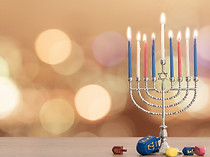The Transfiguration- A Vision of a Sukkot?
- Leisa Baysinger

- Oct 9
- 2 min read

As the Feast of Sukkot unfolds each year, many ldwell in temporary shelters—sukkot—recalling Israel’s wilderness journey and anticipating the ultimate indwelling of God with His people. But nestled within the Gospels is a moment that transcends time: the Mount of Transfiguration, where Peter, James, and John glimpsed Yeshua not as the suffering servant, but as the returning King in glory. This vision, layered with prophetic meaning, may well have been a preview of His return and reign during a Sukkot in the future.
In Matthew 17, Mark 9, and Luke 9, Yeshua leads His inner circle up a high mountain. There, He is transfigured before them—His face shining like the sun, His garments dazzling white. Suddenly, Moses and Elijah appear, speaking with Him about His departure (Luke 9:31). The disciples are overwhelmed, and Peter exclaims:
“Master, it is good for us to be here. Let us make three tabernacles [sukkot]: one for You, one for Moses, and one for Elijah.” (Luke 9:33)
This wasn’t a random suggestion. Peter, steeped in Torah and the rhythms of the feasts, recognized the prophetic significance of what he was witnessing. The glory, the gathering of the righteous, the cloud of divine presence—it all echoed the themes of Sukkot, the feast of ingathering and divine dwelling.
Sukkot is called “Z’man Simchateinu”—the Season of Our Joy. It celebrates God’s provision and presence, but also points forward to the Messianic Age, when He will dwell with His people forever (Zechariah 14:16-19; Revelation 21:3). The booths symbolize our temporary bodies, awaiting resurrection and glorification.
On the mountain, Peter, James, and John saw Yeshua in His future glory, fulfilling His promise:
“There are some standing here who shall not taste death till they see the Son of Man coming in His kingdom.” (Matthew 16:28)
This was not metaphor—it was a literal vision of His return. Moses, representing the Torah, and Elijah, representing all that the prophets spoke about Him, stood beside Yeshua. Their presence hinted at Yeshua's fulfillment of all of Torah and the prophets, as well as the resurrection of the dead and the gathering of the saints—hallmarks of the end-time fulfillment of Sukkot.
Just as the Israelites were overshadowed by the cloud of glory in the wilderness, so too were the disciples enveloped in a cloud on the mountain. From it came a voice:
“This is My beloved Son, in whom I am well pleased. Hear Him!” (Matthew 17:5)
This divine declaration echoes the themes of Sukkot: God dwelling among His people, revealing His glory, and calling them to listen and obey.
This prophetic preview of His second coming beautifully connects to II Peter 1:16–18, where Peter affirms that they were “eyewitnesses of His majesty.” He calls it a “more sure word of prophecy,” confirming that the Transfiguration was not just a private vision—it was a prophetic unveiling (Greek: apocalypto; Hebrew: galah) of what is to come.
Sukkot, with its themes of joy and divine presence, is the perfect prophetic backdrop for this vision. The desire to build sukkot was not misplaced—it was a response to seeing the Kingdom come in power, the righteous resurrected, and the Messiah glorified.
Blessings,
Leisa







Comments